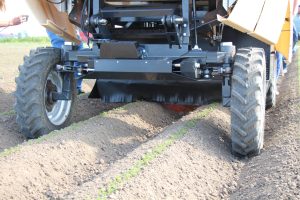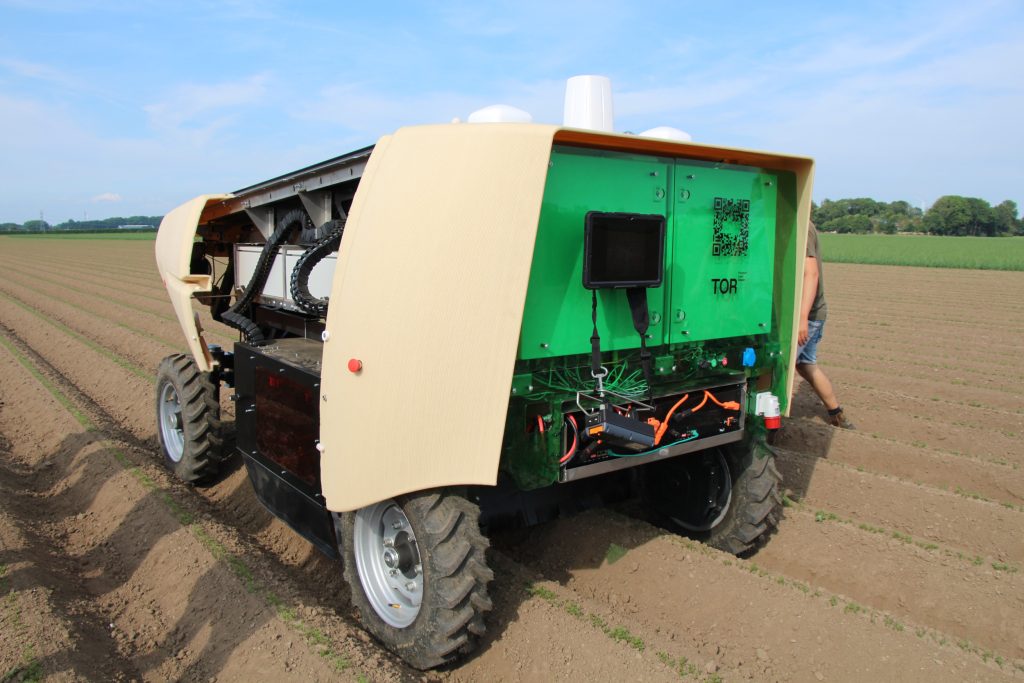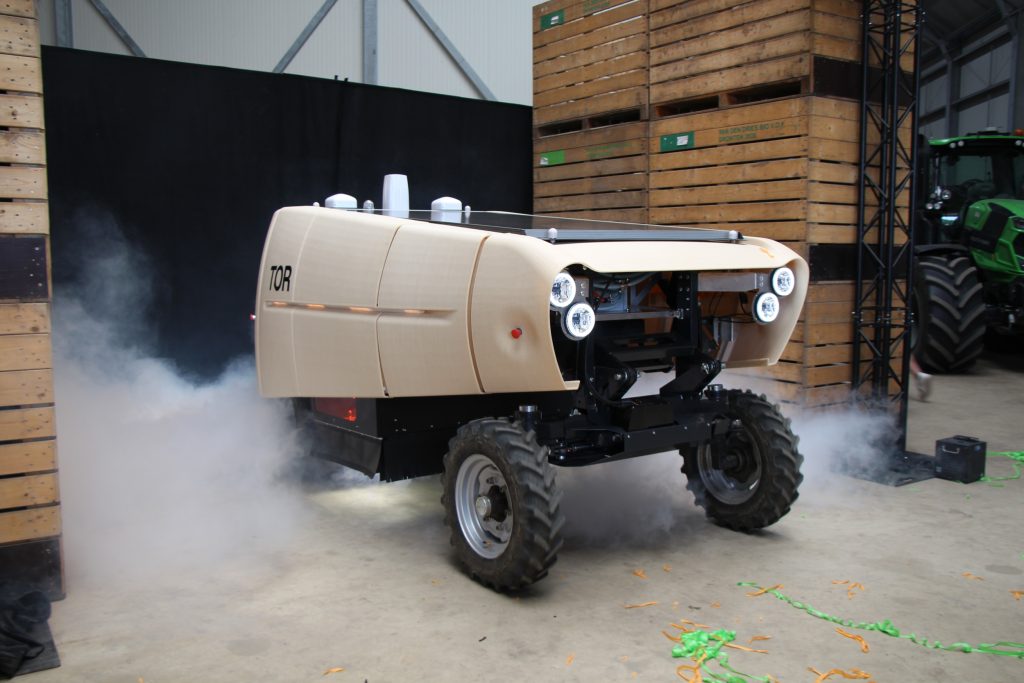Trabotyx launches first Dutch laser weeder

The Dutch startup Trabotyx presents the weeding robot TOR: an autonomous laser weeder for organic arable farming. The unveiling took place on 18 June at the organic arable farm Van den Dries in the Dutch town of Dronten in Flevoland province.
TOR is the name of the weeding robot developed by the Dutch startup Trabotyx. Tor refers to a beetle, the Norse god of thunder, and the English word ‘thorough’. Why all the references, one might ask? Mainly because TOR combats weeds using blue diode laser light. Trabotyx previously removed weeds using moving blades and drill bits, but based on requests from organic farmers, the company has now opted for blue laser technology. TOR is available starting at €214,000, plus €14,980 annually for service, support and maintenance. For the 2026 season, a maximum of 10 machines will be available.
First commercial Dutch laser weeder

Laser technology appears to be becoming a trend in non-chemical weed control. Laser beams do not disturb the soil and can work very close to the crop without causing crop damage. Timeliness is crucial, however. Small weeds from 2 to about 20 millimetres in size are most effectively controlled with laser light. Trabotyx opts for blue diode laser light, as this type of laser, according to the company, stops the weed’s photosynthesis. With this, the company becomes the first Dutch manufacturer to commercially offer a laser weeder. Other laser weeders come from foreign manufacturers or are not yet commercially available.
3 versions
TOR is available in 3 versions with working widths of 1.5 (Flex), 1.8 (Bulbs) and 3.0 metres (Pro), respectively. For each row or ridge, a laser with a power output of 100 or 200 watts is mounted, with a reach of 20 by 20 centimetres. Each laser can target up to 5 weeds per second. At the time of its introduction, TOR was still being operated by remote control, but it will eventually navigate using RTK-GPS. The vehicle’s maximum working speed is 500 metres per hour. The widest version, TOR Pro with 6 lasers, has a capacity of up to 0.15 ha/h and therefore takes up to 6 hours and 30 minutes to cover 1 hectare. A swappable battery and a solar panel provide the necessary energy, and a battery lasts up to 10 hours of weeding – day and night if needed. The vehicle platform is supplied by FieldWorkers.

10 machines in 2026
At present, Trabotyx’s algorithm for distinguishing crops from weeds is ready for lilies, parsnips, carrots, red beet and onions. For the 2026 season, 10 machines will be available. TOR Flex with a 1.50 metre working width costs €214,000, plus €14,980 annually. TOR Pro with a 3.0 metre working width costs €299,000, plus €20,930 annually. The version for bulbs, TOR Bulbs, works at 1.80 metres and costs €349,000, plus €24,430 annually. The annual costs amount to 7 percent of the purchase price and cover service, support and maintenance. The first 10 machines will be sold directly in an area within a 4-hour drive from Den Bosch, where Trabotyx is based. In the future, the company aims to work with a dealer network.




